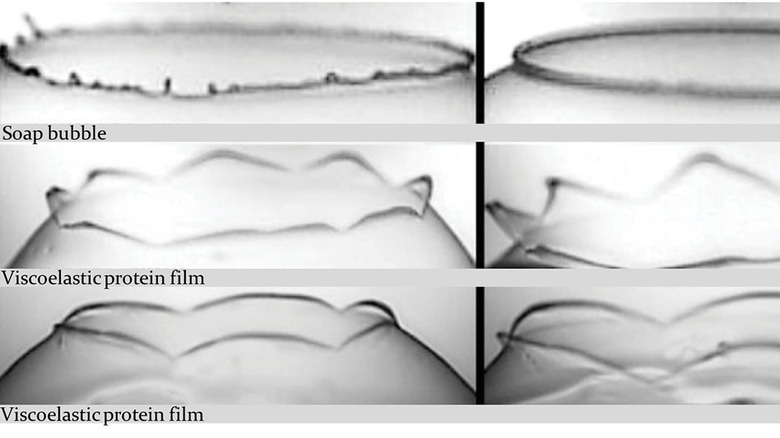Study Reveals Mechanics Behind Bubbles Popping
Researchers at Stanford University have conducted a study involving high-speed cameras to reveal how bubbles form and eventually burst. The study also used analytical modeling to reveal a new popping process. The researchers are looking into bubbles popping, which seems benign on the surface because bubbles are undesirable in the oil, pharmaceutical, and bioreactor industries.
During the manufacturing process or transportation of various liquids, the formation and rupture bubbles can introduce issues in product quality. Stanford researchers were investigating the physics behind bubbles as well, and the Stanford team worked with an international scientific collaboration to study how different kinds of bubbles pop, with a particular interest in bubbles with proteins embedded on the surface, which is common in the pharmaceutical industry and in bioreactors used for cell culture.
The team discovered the protein bubbles opened up like flowers when popped with a needle. Researcher Vinny Chandran Suja said one surprise after all the years of research in bubble physics was that it was an unexpectedly beautiful phenomenon. Bubbles pop in different ways depending on their physical and chemical properties, with one of the most important properties known as viscoelasticity.
Viscoelasticity is an in-between state of material that's not perfectly liquid and not perfectly elastic. Unlike conventional soap bubbles, they found that viscoelastic bubbles with both liquid and solid-like properties deform in popping shapes that mimic a blooming flower. To see each step of the popping process, the team used high-speed cameras that operated 20,000 frames per second, catching the entire process in slow motion.

The team soaked a metal ring in a solution of proteins with viscoelastic properties for their experiment. Next, they carefully inflated bubbles on the ring using highly controlled airflow, and once the bubbles were large enough, they made contact with a needle and popped. When the bubbles hit the needle, the surface peeled away like the petals of a flower.
